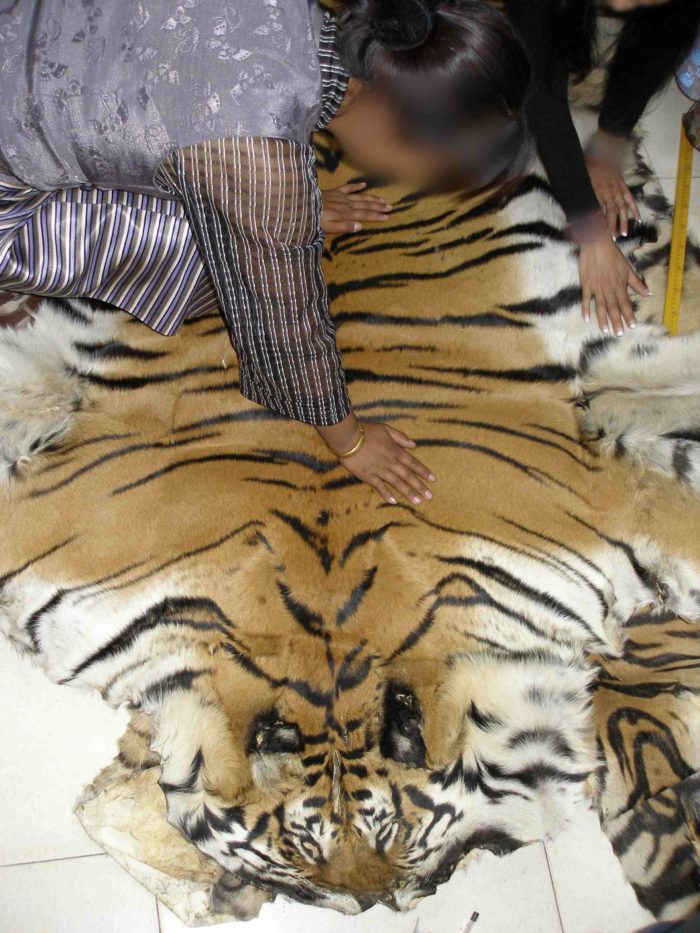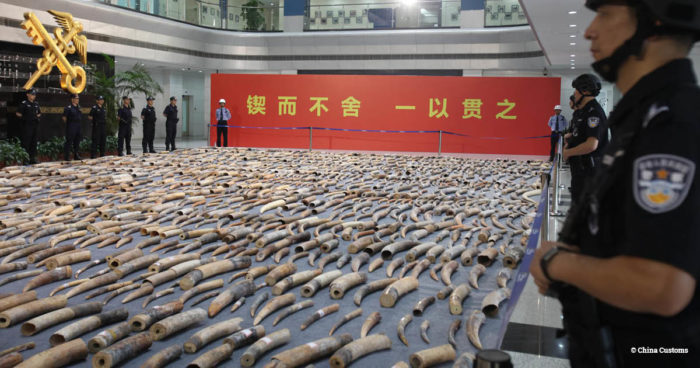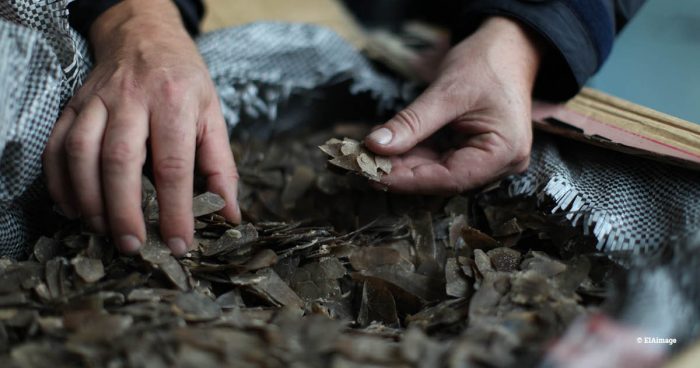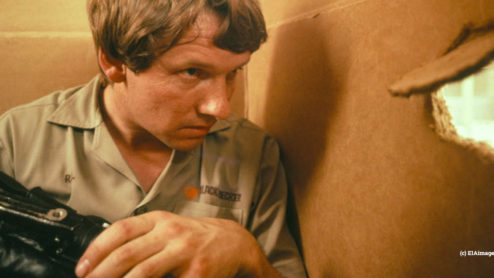Wildlife Week: Wildlife crime devastates both the natural world and human society
After drugs, arms and human trafficking, transnational illegal wildlife trade is the fourth biggest criminal activity in the world.
Estimates as to its value vary, as they must with the money in the hands of criminals, but it is thought by some to be worth $19 billion a year and by others to be between $7-23 billion.
With so much money involved, it’s quite staggering to consider that it is only relatively recently the true scale and severity of wildlife crime has become properly recognised by national leaders with the power and purse strings to make a difference; the international community recognised the illicit trafficking of flora and fauna as a form of serious transnational organised crime in 2000, as per adoption of the UN General Assembly resolution creating the Convention against Transnational Organised Crime.

Tiger skin offered to EIA investigators (c) EIAimage
For far too long, wildlife trafficking was regarded as a crime of lesser importance because it was deemed to be largely ‘victimless’, more a matter of enterprising small-scale poachers taking the occasional elephant or tiger to supplement meagre incomes, selling on the raw materials for the manufacture of, say, trinkets and tourist souvenirs.
The grim reality couldn’t be further from the truth.
Even a cursory look at the impacts of wildlife crime dispel this dangerous, complacent myth, something long overdue as the planet teeters ever closer to the brink of ecological disaster.
Quite apart from the appalling damage done to myriad species around the world, whether on land or in the oceans, the tentacles of wildlife crime reach into just about every aspect of human society with often devastating effect.
For the most part, it is conducted by highly organised transnational criminal networks, operating across borders and out of a variety of countries, and the blood money it rakes in fuels corruption and conflict while undermining the rule of law, creating insecurity, undermining development and bringing crime and instability into some of the world’s poorest communities
Corruption alone is a huge global problem, with the United Nations estimating that bribes totalling approximately $1 trillion are paid out every year, although not all specifically associated with wildlife crime.
One of the UN’s many goals is to protect ecosystems and halt biodiversity loss, but research establishes a clear link between a country’s corruption levels and its environmental performance; it is hardly surprising, considering the sums involved, that there’s always plenty of money for criminal syndicates to pay off politicians and government officials, from the highest levels down to the frontline enforcement officers, to turn a blind eye.

China Customs officers display ivory seized in the country
Among the challenges of ensuring that wildlife crime is regarded with proper seriousness has been the broad perception of it as a low-risk/high-profit undertaking; a low-paid customs officer who wouldn’t think twice about turning down a bribe to allow through a shipment of narcotics because of the potentially severe consequences may feel that taking a backhander to let a few sacks of pangolin scales through is worth the lesser risk.
Our campaigners have been investigating and documenting poaching, international illegal wildlife trafficking and trade for more than three decades and in almost every single instance we have found a degree of corruption, ranging from the petty bribery of local officials to larceny on a grand scale.
Many undercover meetings with traffickers have shown time and again that bribes are seen as a routine business expense, paid out to ensure the uninterrupted movement of contraband or, in the unlikely event of an official seizure, as a form of insurance to help avoid arrest and prosecution.
With so many eyes looking the other way, wildlife crime flourishes – rule-of-thumb estimates suggest that official seizures account for a fraction of the actual volume of goods being trafficked. We look on aghast at instances such as the recent seizure in Vietnam of nine tonnes of ivory, representing the slaughter of about 1,000 individual elephants – and we should be appalled, because the implication is this is effectively the tip of an iceberg comprising many more tonnes of ivory and thousands more dead elephants.

Pangolin scales seized by enforcement officers
And as it flourishes, illegal wildlife trade gnaws relentlessly away at the very environmental and civic structures upon which people rely for stability in our lives as individuals and societies – at the very point in human history when we most need to take effective, concerted action to halt and reverse the damage being done to the world’s biodiversity.
Tigers, for instance, may number fewer than 4,000 breeding adults in the wild but their importance to where they live can’t be overestimated. In India, tiger habitats are largely well protected, effectively making them iconic kings of the forest in fact as well as name since the protections extended to them and their habitats work to benefit the entire environment – but lose the tigers to poaching and the entire forest is at risk, along with the other creatures living in it, from industrial encroachment for poorly planned dams, roads and railways or to extract resources.
Our analysis shows clearly that the basic legislation and institutional framework to combat wildlife crime already exists but that there remain critical gaps in the response of key source, transit and destination governments.
At least 15 countries assessed by our campaigners already have the requisite national legislation to tackle poaching and wildlife trafficking as a “serious crime” but there remains an urgent need for rapid, high-level commitment to real action.
Put simply, it is a crime as collectively serious as any other and must be treated as such by all governments to reverse its current high profit/low risk nature with international co-operation and meaningful enforcement, relentlessly pursuing the powerful and wealthy players in the networks behind wildlife crime to stamp it out and, by the same deed, put an end to its malign impacts on human society’s structures, stability and integrity.



